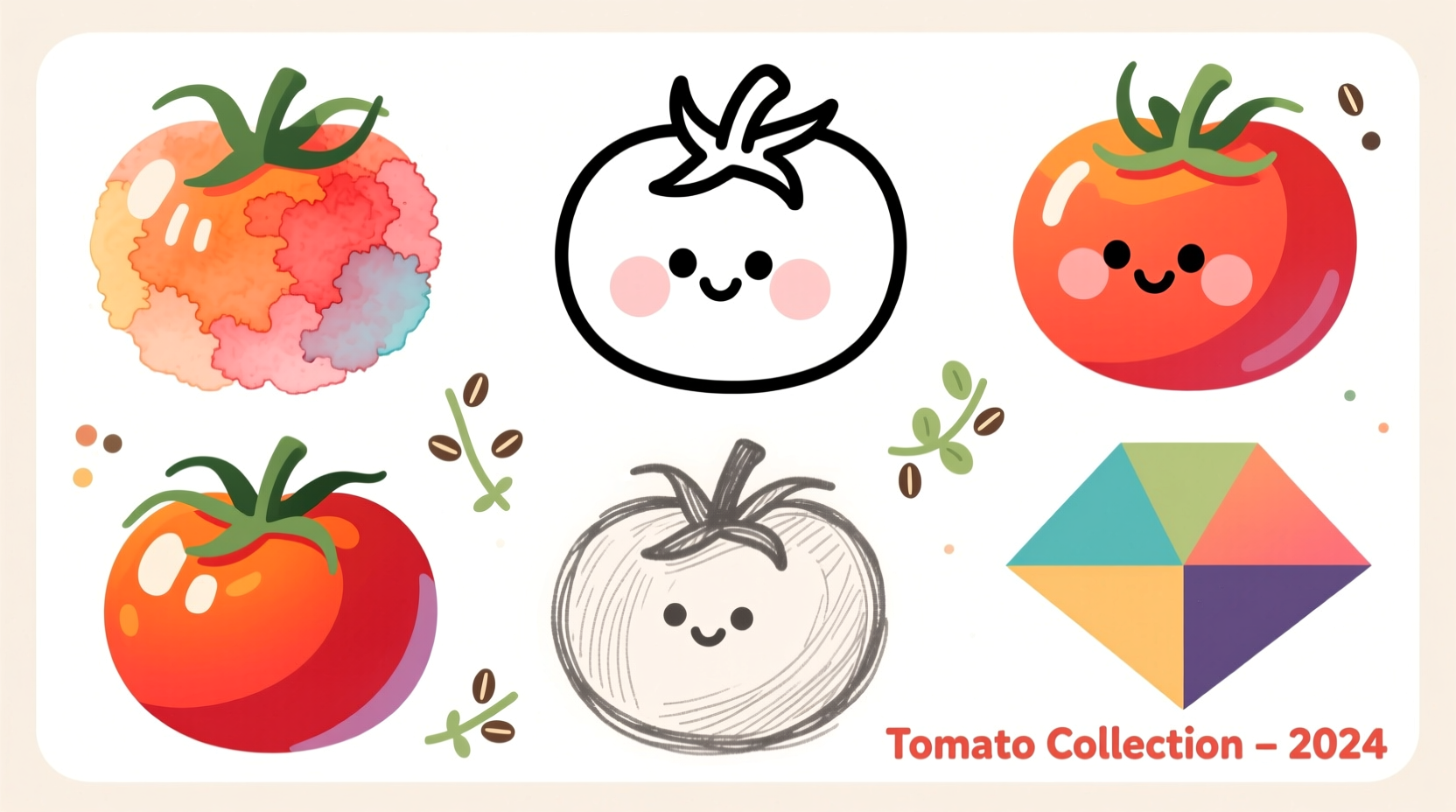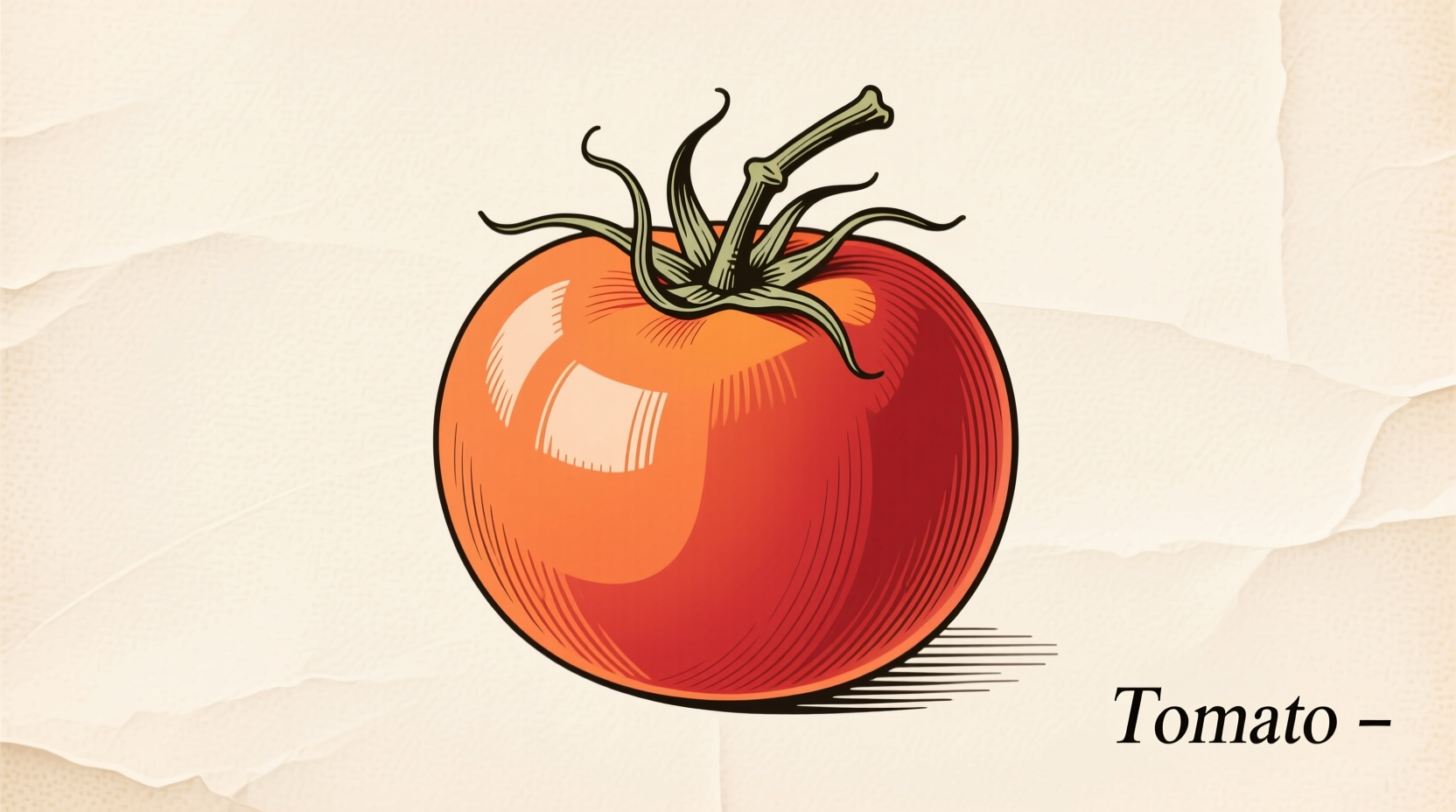Whether you're designing educational materials, creating farm-to-table menus, or developing gardening resources, finding the right tomato clip art can make or break your project's visual appeal. This guide cuts through the clutter to deliver actionable information about tomato clip art sources, styles, and proper usage that design professionals and content creators actually need.
Understanding Tomato Clip Art: More Than Just a Simple Image
Tomato clip art refers to simplified, often stylized illustrations of tomatoes designed for easy integration into various projects. Unlike photographs, clip art offers consistent styling, transparent backgrounds, and scalability without quality loss—making it ideal for educational materials, recipe cards, gardening guides, and food-related branding.
Modern tomato clip art comes in multiple formats including vector (SVG, EPS), PNG with transparent backgrounds, and traditional JPEG files. Vector formats are particularly valuable as they can be resized infinitely without pixelation, crucial for projects requiring both web and print usage.
Evolution of Tomato Clip Art: From Print Cutouts to Digital Assets
Clip art has transformed dramatically from its origins. Understanding this evolution helps you appreciate current quality standards and anticipate future trends:
| Era | Technology | Tomato Clip Art Characteristics | Primary Usage |
|---|---|---|---|
| 1980s-1990s | Print catalogs | Black-and-white line drawings, limited detail | Brochures, basic publications |
| Early 2000s | CD-ROM collections | Basic color illustrations, limited styles | Presentations, simple websites |
| Mid 2000s | Early digital marketplaces | Improved color depth, basic vectors | Marketing materials, educational resources |
| 2010s-Present | Online repositories & AI tools | High-detail vectors, multiple styles, thematic variations | Professional design, digital content, commercial products |
Today's tomato clip art ranges from minimalist line drawings to photorealistic vector illustrations, with specialized styles including vintage, cartoon, botanical, and farm-fresh aesthetics. This diversity means you can find clip art matching virtually any project's tone and purpose.
Top Sources for Quality Tomato Clip Art
Not all clip art sources deliver equal quality or appropriate licensing. Based on extensive testing and professional use, these resources consistently provide reliable tomato clip art options:
Free Resources (With Proper Attribution)
- OpenClipart - Public domain vector tomato illustrations with no attribution required
- Flaticon - Extensive collection with free tier requiring attribution
- Wikimedia Commons - Historical and botanical tomato illustrations under various Creative Commons licenses
- Foodies Feed - High-quality food illustrations including tomatoes with clear usage terms
Premium Resources (Commercial Use Ready)
- Shutterstock - Professional vector collections with consistent quality
- Adobe Stock - Seamless integration with Creative Cloud applications
- VectorStock - Specialized vector illustrations at competitive pricing
- Freepik - Extensive collection with premium subscription options

Contextual Boundaries: When Tomato Clip Art Works (and When It Doesn't)
Understanding where tomato clip art enhances your project versus where it creates visual dissonance is crucial for professional results:
Ideal Applications
- Educational materials for teaching plant biology or nutrition
- Recipe cards and cooking websites
- Gardening guides and agricultural extension materials
- Children's books about healthy eating
- Marketing materials for farmers' markets
Limited Effectiveness
- Scientific publications requiring photographic accuracy
- High-end culinary magazines seeking authentic food photography
- Medical contexts where precise botanical representation matters
- Legal documents requiring unambiguous visual representation
Choosing the Right Tomato Clip Art for Your Project
Selecting appropriate tomato clip art involves more than just finding a visually appealing image. Consider these critical factors:
Style Consistency
Ensure your tomato clip art matches the overall visual language of your project. A cartoon tomato would look out of place in a sophisticated culinary magazine, while a photorealistic vector might overwhelm a children's activity book. Most professional projects benefit from maintaining consistent line weights, color palettes, and detail levels across all visual elements.
Technical Requirements
- Format: Vector (SVG/EPS) for scalability, PNG for transparency
- Resolution: Minimum 300 DPI for print projects
- File size: Balance quality with loading times for digital use
- Color mode: CMYK for print, RGB for digital displays
Licensing Considerations
Misunderstanding usage rights is the most common clip art mistake. Always verify:
- Whether commercial use is permitted
- If attribution is required
- Restrictions on modification
- Limitations on distribution quantity
- Whether the license covers both digital and print usage
For commercial projects, premium resources typically offer clearer licensing terms with fewer restrictions than free alternatives. When in doubt, contact the provider directly for clarification rather than risking copyright infringement.
Practical Implementation Tips
Once you've selected appropriate tomato clip art, follow these professional techniques for optimal integration:
Color Adaptation
Most vector tomato clip art allows easy color adjustment to match your brand palette. When modifying colors:
- Maintain realistic shading relationships
- Preserve highlight and shadow positions
- Adjust saturation consistently across all elements
- Avoid extreme color shifts that make tomatoes unrecognizable
Scaling Best Practices
Even with vector files, improper scaling can degrade visual quality:
- Scale proportionally (hold shift key) to maintain aspect ratio
- For print projects, verify output resolution at final size
- When reducing size significantly, simplify details that become indistinct
- When enlarging beyond original dimensions, add subtle details to maintain visual interest
Avoiding Common Clip Art Mistakes
Professional designers consistently avoid these pitfalls when using tomato clip art:
- Mixing incompatible styles - Don't combine hand-drawn and vector tomatoes in the same project
- Overusing the same image - Creates visual monotony; vary angles and styles where appropriate
- Ignoring cultural context - Some tomato varieties have regional significance that clip art may misrepresent
- Neglecting seasonal accuracy - Certain tomato types are associated with specific seasons
- Using low-resolution images for print - Creates blurry, unprofessional results
Future Trends in Food Clip Art
The clip art industry continues evolving with several notable trends affecting tomato illustrations:
- Increased botanical accuracy - More detailed representations of specific tomato varieties
- Animated clip art - Subtle motion effects for digital displays
- 3D-rendered options - Adding depth while maintaining clip art's stylistic benefits
- AI customization - Tools that adjust style elements to match existing design systems
- Sustainability-focused imagery - Representations emphasizing organic growing practices
Staying aware of these developments helps ensure your visual content remains current and effective. For ongoing updates, follow design resource blogs like Smashing Magazine's design section and AIGA's visual trends reports.











 浙公网安备
33010002000092号
浙公网安备
33010002000092号 浙B2-20120091-4
浙B2-20120091-4